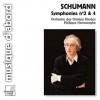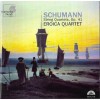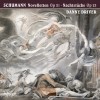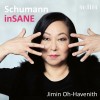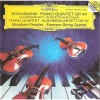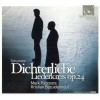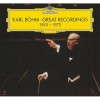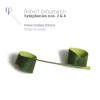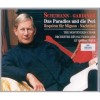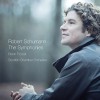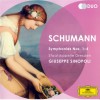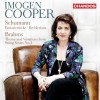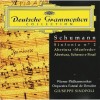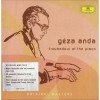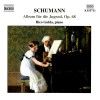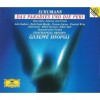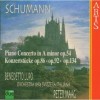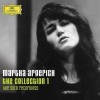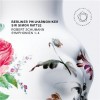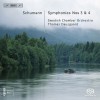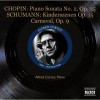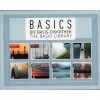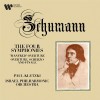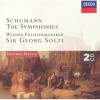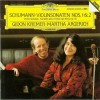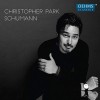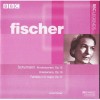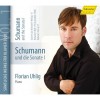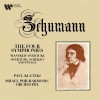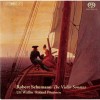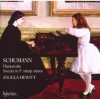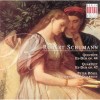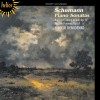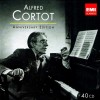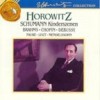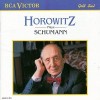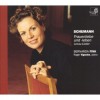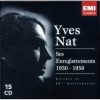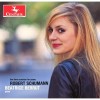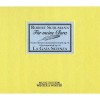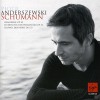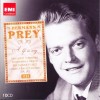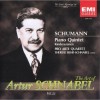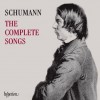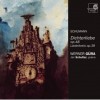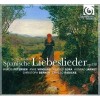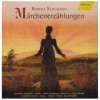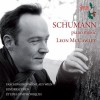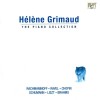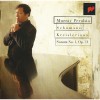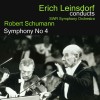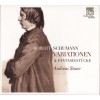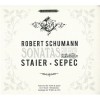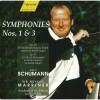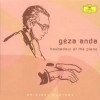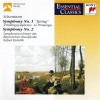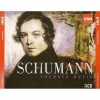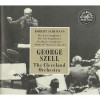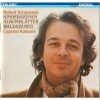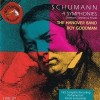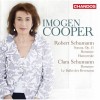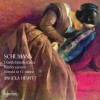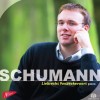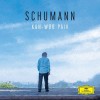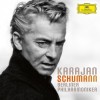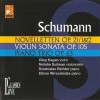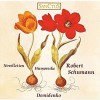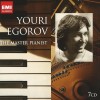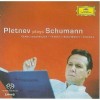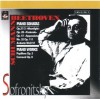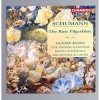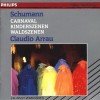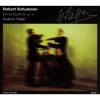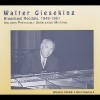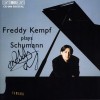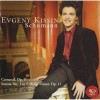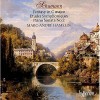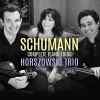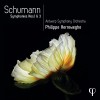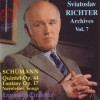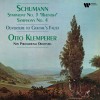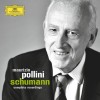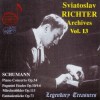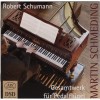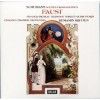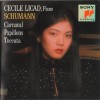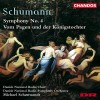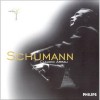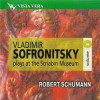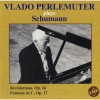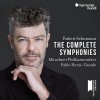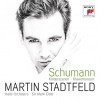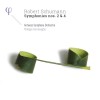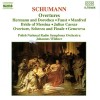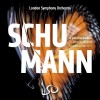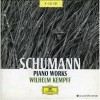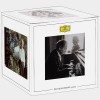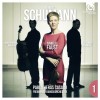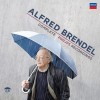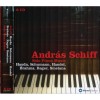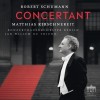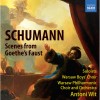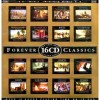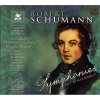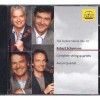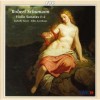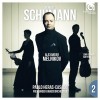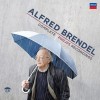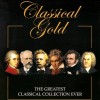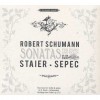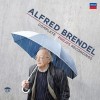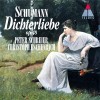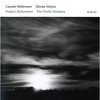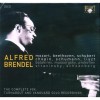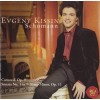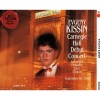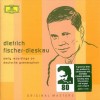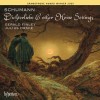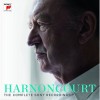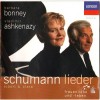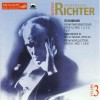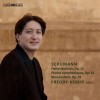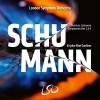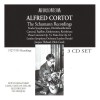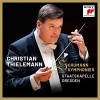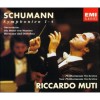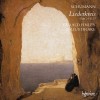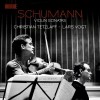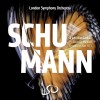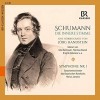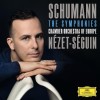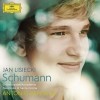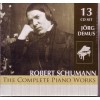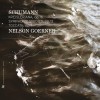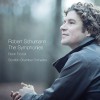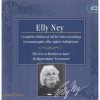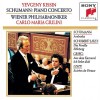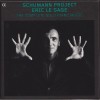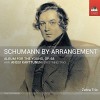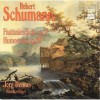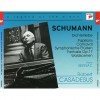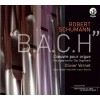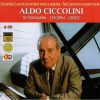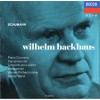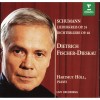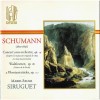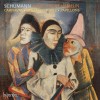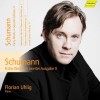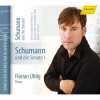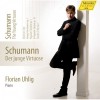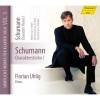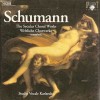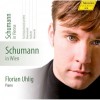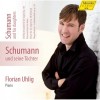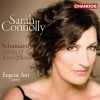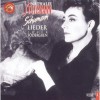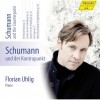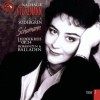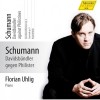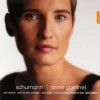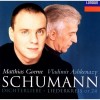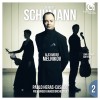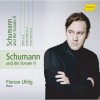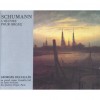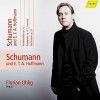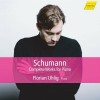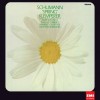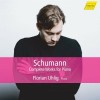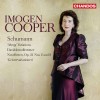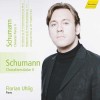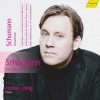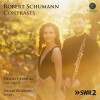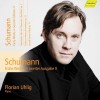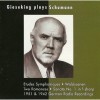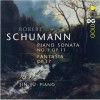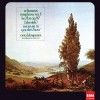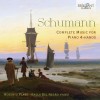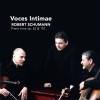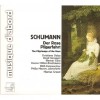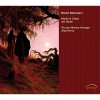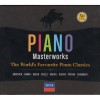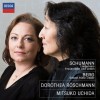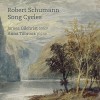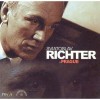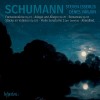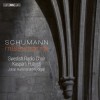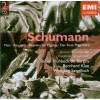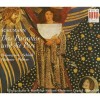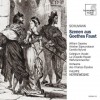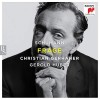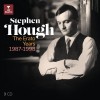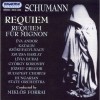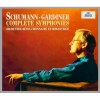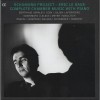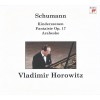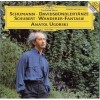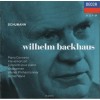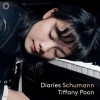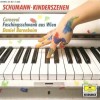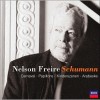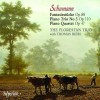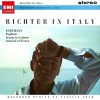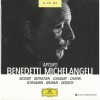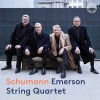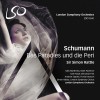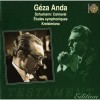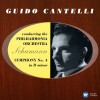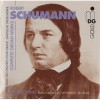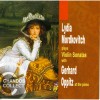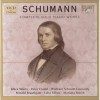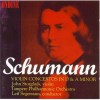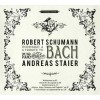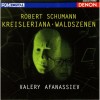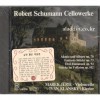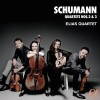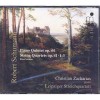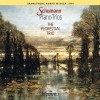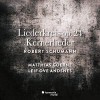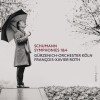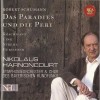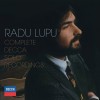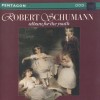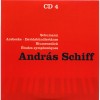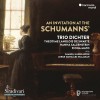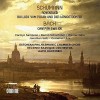| Country: | Germany |
| Period: | Romantique |
Biography
Schumann was the 5th and last child in the family. He was born in Zwickau, situated in Saxony. Schumann started to compose before he was 7 years old, but his childhood was spent in studying music and literature – latter is because August Schumann, his father, was a novelist, publisher and bookseller.
At age of fourteen Schumann wrote an essay about the music and its aesthetics, and also he contributed to a book named "Portraits of Famous Men", which was edited by his father. When he was studying at school in Zwickau he studied the works of the famous German poets Johann Wolfgang von Goethe and Friedrich Schiller, as well as Byron and some of the Greek tragedians. His most powerful and lasting literary inspiration was Jean Paul, a famous writer, whose influence can be seen in Schumann's early novels Selene and Juniusabende, completed in 1826.
Schumann's music interest was provoked in childhood by the concert of Ignaz Moscheles, who was playing once at Carlsbad, and later he developed a deep interest in the works of Felix Mendelssohn, Franz Schubert and Ludwig van Beethoven. However, his father, thanks to whom boy was encouraged in his musical aspirations, died in 1826. Mother and guardian never encouraged his music career, so in 1828 he decided to leave the school, and after a trip, during which he visited Munich and met Heinrich Heine, he went to study law in Leipzig. In 1829 his continued the studies in Heidelberg.
On the Eastertide of 1830 year he heard a play of Niccolò Paganini in Frankfurt. At the same year Schumann wrote to mother, that his whole life was like a struggle between law and music. When Christmas came he had already been in Leipzig. He was taught piano lessons by old master Wieck. Latter praised him and said he would be a successful pianist.
During these studies, Schumann wounded his right hand. It is suggested that he damaged finger when he used a mechanical device, specially designed for strengthening of weak fingers. It held back one finger at the moment when he exercised the others. Other thought the reason was a side-effect, caused by a syphilis medication. The real cause of that injury isn’t known, but in any of events Schumann abandoned his ideas of a concert career and finally devoted himself to composition instead. On top of that Robert began a course of theory lectured by Heinrich Dorn, a German composer and a conductor of the Leipzig opera. During this time the composer considered to compose an opera based on the topic of Hamlet’s revenge.
The fusion of the musical illustration with its literary idea was first to take shape in Papillons, Op. 2 (translated as "Butterflies"). Also it was pretty foreshadowed to some extent in his first criticism, namely in an essay written in 1831 on variations of Frédéric Chopin on a theme from Mozart's Don Giovanni, which was published in the Allgemeine musikalische Zeitung. In contents it is discussed by the imaginary characters named Florestan (the embodiment of a voluble and passionate side of Schumann) and Eusebius (his introspective, dreamy side) – the counterparts of Walt and Vult in Flegeljahre, one of Jean Paul's novels. A third, namely Meister Raro, expresses his own opinion. The latter can represent either the composer himself, Clara (Wieck's daughter), or the combination of both of them (Clara plus Robert).
When Schumann wrote Papillons, he made a further step. The characters and scenes of his favorite novel now had passed consciously and definitely into the written music, so in a letter from Leipzig (dated April of 1832) he bids his brothers to read “Flegeljahre” as soon as possible, because his Papillons are planned to be a musical representation of masquerade.
In 1832 Schumann visited his relatives at Schneeberg and Zwickau, where he played the first part of Symphony in G minor. In the city of Zwickau the works were performed at a concert, which was given by Clara Wieck – at that time she was only 13 years old. On such occasion she played bravura Variations written by Henri Herz, whom Schumann was opposing already as a philistine. It was also on this event when Schumann’s mother said to Clara, then she should marry Robert one day. The G minor Symphony was never published by Schumann, but has been played and also recorded after his death. The death of his sister-in-law Rosalie and his brother Julius in 1833 obviously affected Schumann, so he felt a profound melancholy, which led to his first suicide attempt.
During the spring of 1834 Schumann had sufficiently gotten better to release Die Neue Zeitschrift für Musik (translated as "New Journal in Music"), published first on 3rd of April in 1834. In this Journal Schumann published many critical essays, and often criticized the trendy taste for flashy and technical displays from figures that Schumann interpreted as inferior composers. Schumann took part in reviving interest in past composers, including Weber, Beethoven and Mozart, while also he promoted the works of some of the contemporary composers like Chopin (who didn’t like Schumann's works) and Berlioz, whom Robert praised for creating substancial music. On the other side, Schumann discredited the school of Richard Wagner and Franz Liszt. Among Schumann's associates of that time were such composers as Norbert Burgmüller and Ludwig Schunke (whom Schumann's Toccata in C was dedicated to).
Editorial duties of Schumann in the 1834’s summer were suddenly interrupted by his relations with 16-year-old girl, Ernestine von Fricken, to whom he soon became engaged. Ernestine was the adopted daughter of a rich Bohemian. Schumann constructed Symphonic Studies on his own, and it was based on variations of her uneasy life theme. But later Schumann broke off that engagement because of his growing attraction to Clara Wieck, who was 15-year-old. In 1835 flirtatious exchanges led to their first kisses on the porch outside Wieck’s house in November and mutual love declarations in December in Zwickau, where Clara suddenly appeared in concert. In august Schumann learned that Ernestine von Fricken’s childbirth was identified as an illegitimate, so she would have no dowry, and being fearful that her limited means could force him to earn his living pretty hard, he decided to take a break to the end of the year. But soon his idyll with Clara Wieck was brought to a pretty unceremonious end. When her father became aware of their night dates during the holidays, he summarily forbade them to have further relationship.
Carnaval (or Op. 9, written in 1834) is considered to be the one of Schumann's most characteristic and genial piano works. Schumann starts almost every section of this work with the musical notes which signified in German language by the letters that spell Asch (A, C, E-flat, and B, or alternatively A-flat, C, and B; in German these are A, C, Es, and H, and As C and H respectively), the place (now situated in the Czech Republic, then it called Bohemia) which was a birthplace of Ernestine, and the notes are also can be understood as the musical letters in the name of Schumann. His named sections were for both Clara ("Chiarina") and Ernestine ("Estrella"). The imaginary figures that appeared so often in many of his critical writings, namely Eusebius and Florestan, also appear along with brilliant imitations of Paganini and Chopin. The work is alike Davidsbündler march— the Philistines against the league of King David's men in which it can be heard the dull clamour of falsehood in contest with the clear truth accents, which are embodied in a quotation from the Grandfather's Dance, written in 17th century. Schumann went further in Carnaval than in Papillons as he conceived the story as good as the musical illustration.
On 3th of October in 1835 Schumann met Mendelssohn in Leipzig, and his gratitude of that great composer was shown with exactly the same generous freedom that easily distinguished him in all of his relations with other musicians. It enabled him to distinguish once the genius of the then-unknown composer Johannes Brahms when they met at the first time in 1853.
In 1836 Schumann was already known as a pianist and his association with Clara Wieck finally ripened into love. One year later he asked her father's agreement to marry Clara, but he refused.
In the series of piano pieces named Op. 12, Fantasiestücke, Schumann gives once more a sublime picture of the fusion of musical and literary ideas as embodied apprehensions in such pieces as In der Nacht and Warum. When he had written In Der Nacht he detected the fanciful suggestion of a sequence of episodes from the storyline of Hero and Leander. The collection starts with a notable example of Schumann's predilection for rhythmic vagueness, as unrelieved syncope plays strongly against the time signature, that looks like the first movement of Faschingsschwank aus Wien. After the appropriately titled work "Dream's Confusion" and a well told fable, collected works send on an introspective note in the Eusebius’ manner
Edvarg Grieg thought that Clara Shurman was one of the most famous and soulful peianists of the day.
The Kinderszenen, Op. 15, was completed in 1838. It is a favorite Schumann's piano work and can be described as childlike and playful, also it nicely reflects the childhood and its innocence. The Träumerei is considered as one of the most well-known piano pieces that have been ever written. It exists in myriad of transcriptions and forms, and became the favorite encore of many piano artists. The piece appears to be simple, but has been interpreted as "complex" in its harmonic structure.
Another great Schumann’s work is 1838 Kreisleriana. It carried further his emotional range and fantasy.
The Kreisleriana (1838) is considered as one of the Schumann's greatest works, also carried his fantasy and emotional range further. Schumann used fictional poet of Hoffman, named Johannes Kreisler, to make an imaginary mouthpiece of him for the sonic emotional states expression in music that he described as “mad and fantastic”.
Op. 17, The Fantasia in C, was written in the summer of 1836. It is a work of deep pathos, passion that is imbued with the personality of late Beethoven. No doubt this was deliberate, as the profits from sales of the work were initially intended to later be contributed for creating a monument to Beethoven (he had died nine years before in 1827). The closing of the 1st movement of the Fantasy has a musical quote taken from a song cycle of Beethoven named An die ferne Geliebte, Op. 98 (at the "Adagio" coda it was a part of the 1st song of an die ferne Geliebte). Schumann dedicated this work to Liszt, who thought later that the Fantasy was appropriate to be played excessively heavily, and should have a “dreamier” character than German vigorous pianists conduced to impart. Liszt also said once, that this work is a noble work, which is worthy of Beethoven.
In 1837 Schumann published his complex set of variations named Études symphoniques, written in 1834-1835, which cannot be played without a high-professional piano technique.
Afterwards Schumann visited Vienna, where he discovered previously unknown work of Franz Schubert - Symphony No. 9 in C. In 1939 was published his "Carnival Prank from Vienna" (Faschingsschwank aus Wien). Central part of the 1st movement is a main sense of a prank, as it describes squeezing of a veiled thinly reference to the Marseillaise, who was banned afterwards in Vienna to honor the memory of Austrian invasion committed by Napoleon. Still the festive mood doesn’t preclude some moments of melancholic introspection, shown in the Intermezzo.
When Clara Wieck became at legal age to be no longer a subject to the father’s commands, the acrimonious battle of latter and Schumann ended. He married her on 12th of September in 1840 at the city of Schönefeld.
Before the 1840 year Schumann had a habit to write preferably for the piano, but in 1840 he wrote nearly 170 songs. This year (scholars call it as the Liederjahr or in another words "year of the lied") made the most important period in musical legacy of Schumann. As Clara’s father didn’t accept Robert as suitor, he had to secretly court her. They rendezvoused and exchanged love letters in secret. Often Robert just waited in a nearby city cafe for many hours to see for a few minutes Clara after she performed her concerts. Finally they married in 1840, and this great outpour of lieder (that means a set of vocal songs performed with piano accompaniment) is related directly to the happiness that he felt from finally having his love. This can be seen for example in "Widmung", where in the postlude he used the melody from Schubert's "Ave Maria" - as a means of exalting his Clara. Biographers of Schumann have attributed the despair, the doubt and the sweetness of these songs to those of the emotions, that awaked by his love. Robert and Clara had 8 children, but one of them died in infancy.
Among his chief song-cycles of that period can be mentioned his settings of the Frauenliebe und leben of Chamisso (Op. 42), the Dichterliebe of Heine (Op. 48), the Liederkreis of Joseph von Eichendorff (Op. 39), and Myrthen, which is a collection of songs, that includes poems by Rückert, Heine, Burns, Byron, Moore and Goethe. The songs Die beiden Grenadiere (Op. 49) and Belsatzar (Op. 57) both written to Heine's words, show Schumann as a genius ballad writer, although the dramatic ballad is less congenial to his nature than the genre of introspective lyric. The opus №35 (to words of J. Kerner) and opus №40 sets, though less well known, also include songs of dramatic and lyric quality.
Despite his success, Schumann was awarded a doctoral degree in 1840 by the Jena University and a professorship three years later in the Conservatory of Music, which was found by Felix Mendelssohn that same year in Leipzig. Once when Robert was on a Russian concert tour accompanying his wife he was asked whether he was a musician like his wife. He remained sensitive to wife’s greater worldwide acclaim as a pianist.
Around 1841 he wrote 2 of his 4 symphonies. He devoted the 1842 year to composing chamber music. At this period he wrote his Piano Quintet in E flat, Op. 44, which is admired nowadays as one of his best known works. In 1843 he wrote his first essay at the genre of concerted vocal music named Paradise and the Peri. Afterwards his compositions weren’t confined to any one form.
In the period of his life between 1844–1853 Schumann was deeply busy in setting Faust of Goethe to music, and as a result his health deteriorated. The first half of 1844 he spent on tour in Russia with Clara. When he was returning to Germany he decided to abandon his editorial work, and then left Leipzig and moved to Dresden. There he suffered a lot from continual "nervous prostration". When he began to work he started to have an apprehension of soon death. It was exhibited in loathing for all of the metal instruments (including even keys), for drugs, for high places. I his diaries he stated that he was suffering continuously from imagining the note A5 sounding permanently is his ears. But in 1846 he felt himself recovered and even revisited Vienna, travelled to Berlin, Prague and Zwickau in 1847. Enthusiasm, which he received from meeting with audience, pleased him and since that he was famous in Leipzig and Dresden only.
The only opera Schumann wrote in 1848 was Genoveva, Op. 81. It is interesting for its attempt to exclude the recitative, which the composer regarded as an interruption directly to the musical flow. The chosen subject of Genoveva, which was based on Christian Friedrich Hebbel and Ludwig Tieck, was not an easy choice; but it is important to remember in 1842 the possibilities of the genre of German opera had been realized keenly by Schumann. He is also famous for his words, that German opera is his prayer, night and morning. It is a real field to create something profound, simple, German. And in his notebook of suggestions for the text of operas amongst others are found: Till Eulenspiegel, Lohengrin and Nibelungen. Schumann's constantly flowing melody can be seen in this work as a forerunner to melos, which used Wagner.
In 1849 Schumann wrote the music to Byron's Manfred. The rebellion in Dresden caused Schumann to change his location to Kreischa, a little village situated a few miles outside the city. In the August of 1849 yearthey celebrated the hundredth anniversary of Goethe's birth. Schumann performed the scenes of the Faust that were already complete in Weimar, Leipzig and Dresden. Liszt gave as always unwearied encouragement and assistance. The rest of this work was to be done later in 1849, and the overture (which Schumann took as one of the sturdiest creations) was ended in 1853.
During the period of 1850-1854, the nature of the composer’s works is particularly varied. The popular thought that the quality of his music quickly decayed has been under the question, as the changes in style could be simply explained by plain experimentation.
In the year of 1850 Schumann succeeded F. Hiller as musical director at Düsseldorf. But the latter was an incompetent conductor so he quickly aroused the opposition of his colleagues and other musicians. Therefore his contract was terminated. During the period of 1851-1853 he had time to visit Switzerland, Leipzig and Belgium. In 1851 he completed his Symphony №3 named "Rhenish", also he revised what to publish as his fourth symphony. On 30th of September in 1853, at the age of 20 Brahms unexpectedly knocked on the door of the Schumann’s home carrying a letter of introduction from a famous violinist Joseph Joachim. But Schumann wasn’t at home, and met Brahms only on the next day. Brahms amazed Robert and Clara with his own music, stayed with them for a few weeks and eventually became a close friend of their family (after the death of Schumann he worked closely with Clara to popularize his compositions). During this time Brahms, Schumann and his pupil Albert Dietrich cooperated on the composition of the 'F-A-E' Sonata for Joseph Joachim; Schumann also published an article named "Neue Bahnen" (trans. “New Paths”) hailing the unknown composer (meaning Brahms) from Hamburg, who had still published nothing, as "the Chosen One" who was intended to give an ideal expression to the time. It was really unusual ways to present young Brahms to the musical world, as there were set enormous expectations of him which he didn’t fulfill for a long period of time. At the beginning of 1854 Schumann visited Hanover. There he heard a performance of his Peri and Paradise organized by Brahms and Joachim.
Schumann went back to Düsseldorf and started to create a set of his complete works and make an anthology on the subject of music, but he felt symptoms that had threatened him before to come again. In addition to the single note he imagined now voices sounded in one of his ears and he also heard some kind of angelic music. One night he left his bed suddenly, telling Clara about Mendelssohn and Schubert sending him a theme — indeed he was just recalling Violin Concerto of his own — which he needs to write down, so on this theme Schumann wrote 5 variations for the piano. That was his last work. Later Brahms published the theme in a supplementary volume, added to the complete edition of piano music, written by Schumann, and in 1861 Brahms wrote a substantial set of variations for piano duet now known as his Op. 23.
At the end of the February Schumann's symptoms were only to increase, the angelic visions were replacing sometimes by demonic visions. He feared he can do harm to Clara, so he warned her about it. On 27th February in 1854, he made a suicide attempt and threw himself into the Rhine River from a bridge. But he was shortly rescued by boatmen and then taken home. Afterwards he told about wish to move to an asylum for those who were insane He entered sanitarium of Dr. Franz Richarz in Endenich, that was to be a quarter of Bonn, and stayed there until his death, which happened on 29th of July in 1856.
Some modern biographers that studied the symptoms of his illness say the death was caused by a syphilis, which he could contract when he was a student. Literary scholar and musicologist Eric Sams thinks, that it looks more like mercury poisoning, as mercury was a common treatment for syphilis. Robert Schumann was buried at the Central Cemetery (“Zentral Friedhof”), Bonn. A statue, created by Adolf von Donndorf, was installed on his tomb in 1880.
When Schumann died, his wife devoted herself principally to the interpretation of Robert's works. She visited England in 1856, but local critics received her husband’s music coolly. Second visit to London was in 1865. There she stayed for quite a long period of time making regular appearances. She became the editor of Schumann’s works for “Breitkopf und Härtel”. There was a rumor that Clara and Bramhs destroyed a big amount of later Schumann’s works as the thought it were tainted by his premortal madness. Bt indeed there are only 5 pieces for cello and piano were to be destroyed. Almost all of the works, created in 1953, such as the Fantasy for Violin and Orchestra, Third Violin Sonata and the Violin Concerto have entered the repertoire.





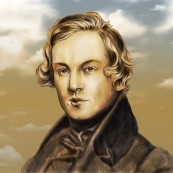

![Essential Organ [CD 1 of 2]](http://static.classicalm.com/repository/collection-cover/small/1307-img1359479519576972.jpg)
![Piano trios (Gilels, Kogan, Rostropovich) [5 CD]](http://static.classicalm.com/repository/collection-cover/small/219-img1316559969860933.jpg)
![Russian legends - David Oistrakh [20 CD]](http://static.classicalm.com/repository/collection-cover/small/267-img1318418713553266.jpg)
![Russian legends - Leonid Kogan [10 CD]](http://static.classicalm.com/repository/collection-cover/small/269-img1318707830156876.jpg)
![Russian legends - Emil Gilels [16 CD]](http://static.classicalm.com/repository/collection-cover/small/261-img1318115683212190.jpg)
![Russian legends - Mstislav Rostropovich [10 CD]](http://static.classicalm.com/repository/collection-cover/small/275-img1319023256353734.jpg)
![Russian legends - Evgeny Kissin [9 CD]](http://static.classicalm.com/repository/collection-cover/small/265-img1318196902541222.jpg)
![Steinway Legends - Arturo Benedetti Michelangeli [2 CD]](http://static.classicalm.com/repository/collection-cover/small/231-img1316813313531382.jpg)
![Steinway Legends - Wilhelm Kempff [2 CD]](http://static.classicalm.com/repository/collection-cover/small/247-img1316898358255855.jpg)
![Steinway Legends - Claudio Arrau [2 CD]](http://static.classicalm.com/repository/collection-cover/small/233-img1316815171145336.jpg)
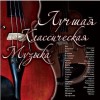
![Steinway Legends - Martha Argerich [2 CD]](http://static.classicalm.com/repository/collection-cover/small/237-img1316861995833914.jpg)
![Steinway Legends - Maurizio Pollini [2 CD]](http://static.classicalm.com/repository/collection-cover/small/239-img1316863332613202.jpg)
![Steinway Legends - Alfred Brendel [2 CD]](http://static.classicalm.com/repository/collection-cover/small/229-img1316811188196246.jpg)
![Steinway Legends - Mitsuko Uchida [2 CD]](http://static.classicalm.com/repository/collection-cover/small/241-img1316890455139019.jpg)
![Deutsche Grammophon Classic Gold [CD 2 of 3]](http://static.classicalm.com/repository/collection-cover/small/1315-img1361382127512512.jpg)
![Top 100 der Klassik [CD 3 of 5]](http://static.classicalm.com/repository/collection-cover/small/1366-img1372593555699508.jpg)
![Tresors des Requiem [CD 1 of 4]](http://static.classicalm.com/repository/collection-cover/small/1377-img1374572669870076.jpg)
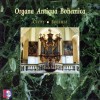
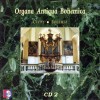
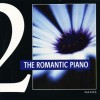
![The Top 100 Masterpieces of Classical Music 1685-1928 [CD5of10]](http://static.classicalm.com/repository/collection-cover/small/1357-img1372443663163006.jpg)
![The Top 100 Masterpieces of Classical Music 1685-1928 [CD6of10]](http://static.classicalm.com/repository/collection-cover/small/1358-img1372444971255802.jpg)
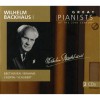
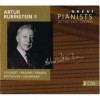
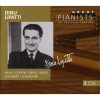

![Great European Organs. 68-Keith John [Fulda Cathedral]](http://static.classicalm.com/repository/collection-cover/small/975-img1342722389358184.jpg)
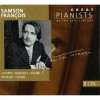
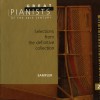
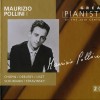
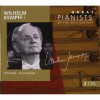
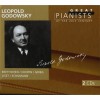
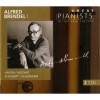
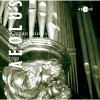
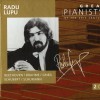
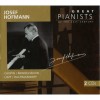
![Het Historische Orgel in Nederland [CD 16 of 20]](http://static.classicalm.com/repository/collection-cover/small/1011-img1343570867655146.jpg)

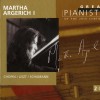
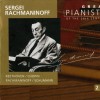
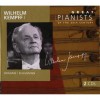
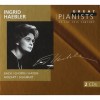
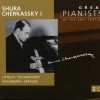
![Art of Organ Building - Van den Heuvel organs (various) [CD 2 of 2]](http://static.classicalm.com/repository/collection-cover/small/787-img1339956670645613.jpg)
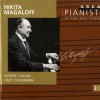
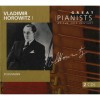

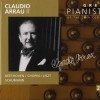
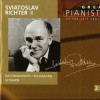
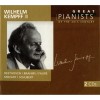
![Russian legends - Lazar Berman [7 CD]](http://static.classicalm.com/repository/collection-cover/small/263-img1318187682202830.jpg)
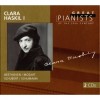
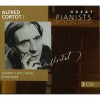
![Great European Organs. 02-Keith John [L'eglise du Chant d'Oiseau Brussels]](http://static.classicalm.com/repository/collection-cover/small/843-img1340483690667549.jpg)
![Russian legends - Daniel Shafran [7 CD]](http://static.classicalm.com/repository/collection-cover/small/277-img1319146356180506.jpg)
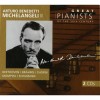

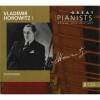
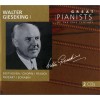
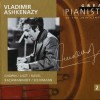

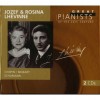
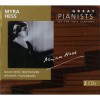
![Great European Organs. 61-Roger Judd [St Laurenskerk Rotterdam]](http://static.classicalm.com/repository/collection-cover/small/961-img1342695633270826.jpg)
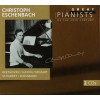
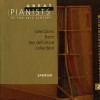
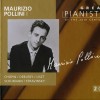
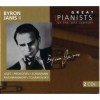
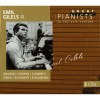
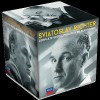
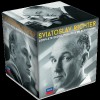
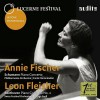
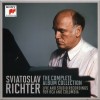
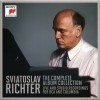
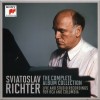
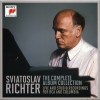



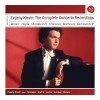
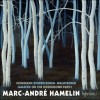
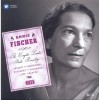
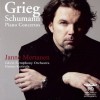
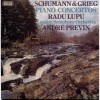

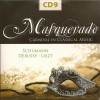
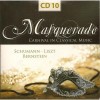
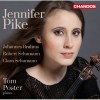
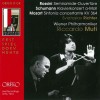
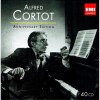

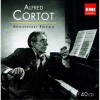
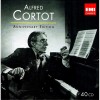
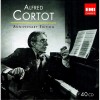
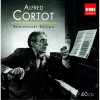
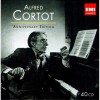
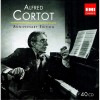
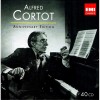
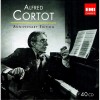
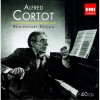
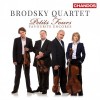
![Martha Argerich and Friends: Live from Lugano 2011 [CD 1 of 3]](http://static.classicalm.com/repository/disk-cover/small/1861-img1344862225709236.jpg)
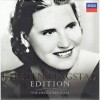
![Sviatoslav Richter - The Teldec Recordings [CD 3 of 3]](http://static.classicalm.com/repository/disk-cover/small/1873-img1344936777107109.jpg)
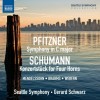
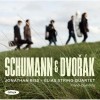
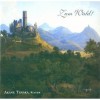
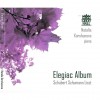
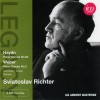
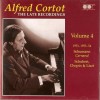
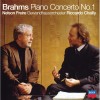
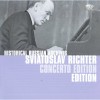
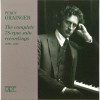
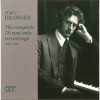

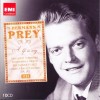
![Martha Argerich Edition: Chamber Music [CD3of8]](http://static.classicalm.com/repository/disk-cover/small/3571-img1403958488625657.jpg)
![Martha Argerich Edition: Chamber Music [CD4of8]](http://static.classicalm.com/repository/disk-cover/small/3572-img1403958933279757.jpg)
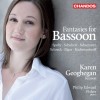
![Martha Argerich Edition: Chamber Music [CD5of8]](http://static.classicalm.com/repository/disk-cover/small/3573-img1403959269319066.jpg)
![Martha Argerich Edition: Chamber Music [CD8of8]](http://static.classicalm.com/repository/disk-cover/small/3576-img1404469444759411.jpg)
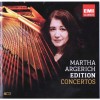
![Martha Argerich Edition - Solos & Duos [CD1of6]](http://static.classicalm.com/repository/disk-cover/small/3581-img1404476538787570.jpg)
![Martha Argerich Edition - Solos & Duos [CD2of6]](http://static.classicalm.com/repository/disk-cover/small/3582-img1404477735691252.jpg)
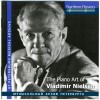
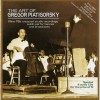
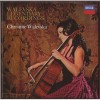
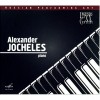
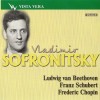

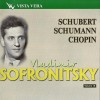
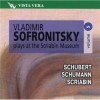
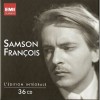
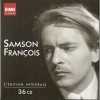

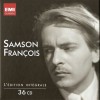
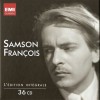
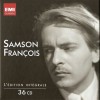
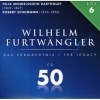
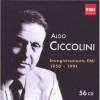

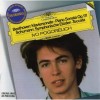
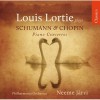
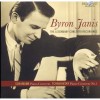
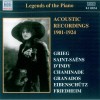
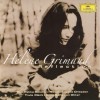
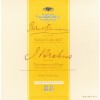

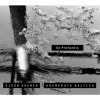
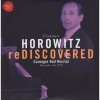
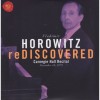
![Pablo Casals - The Complete Published EMI Recordings (1926 - 1955) [CD7of9]](http://static.classicalm.com/repository/disk-cover/small/3592-img1404564025494971.jpg)
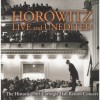
![Pablo Casals - The Complete Published EMI Recordings (1926 - 1955) [CD9of9]](http://static.classicalm.com/repository/disk-cover/small/3594-img1404566163886690.jpg)
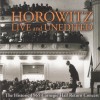
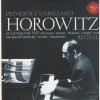
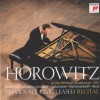

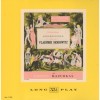
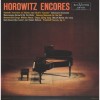
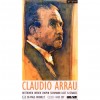
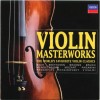
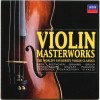
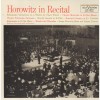
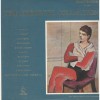
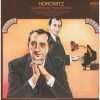
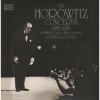
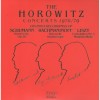
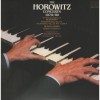
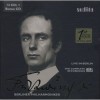
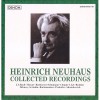
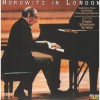
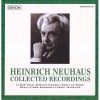
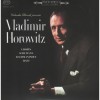
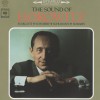
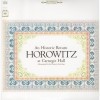
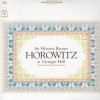
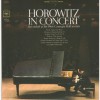
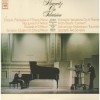
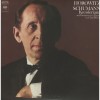
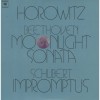
![Martha Argerich - The Collection 2 - The Concerto Recordings [CD4of7]](http://static.classicalm.com/repository/disk-cover/small/3565-img1403954576777649.jpg)
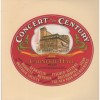
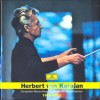
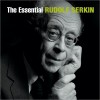
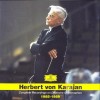
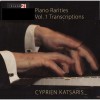

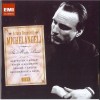
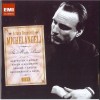
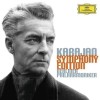
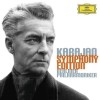
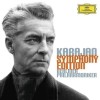
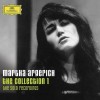
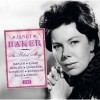
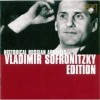
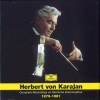
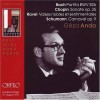
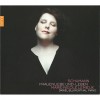
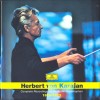
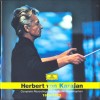
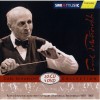
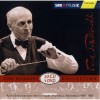
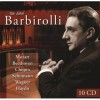

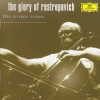

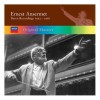
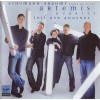
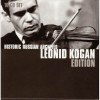

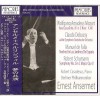
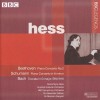

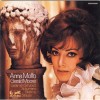
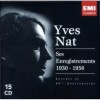
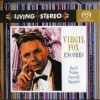
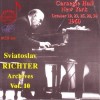
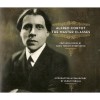
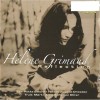
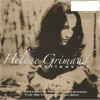
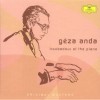
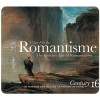
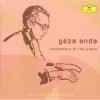
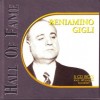
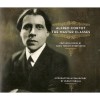
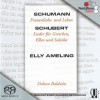
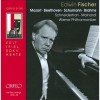
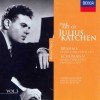
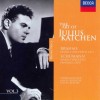
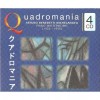
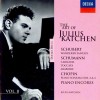
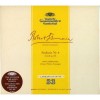
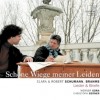
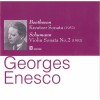
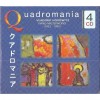
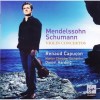

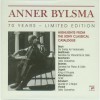
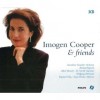
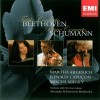
![Casals Festivals at Prades [CD1 of 13]](http://static.classicalm.com/repository/disk-cover/small/3619-img1404991182269349.jpg)
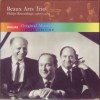
![Casals Festivals at Prades [CD6 of 13]](http://static.classicalm.com/repository/disk-cover/small/3624-img1404994003863213.jpg)
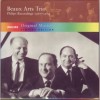
![Casals Festivals at Prades [CD8 of 13]](http://static.classicalm.com/repository/disk-cover/small/3626-img1404998086699999.jpg)

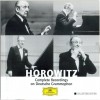
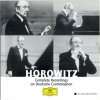
![Casals Festivals at Prades [CD13 of 13]](http://static.classicalm.com/repository/disk-cover/small/3631-img1405000979669989.jpg)
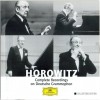

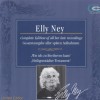
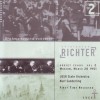
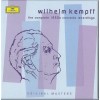
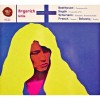
![Rita Streich - The Viennese Nightingale [CD 7 of 8]](http://static.classicalm.com/repository/disk-cover/small/3040-img1372429270183411.jpg)
![Helene Grimaud - The Piano Collection [CD3of5]](http://static.classicalm.com/repository/disk-cover/small/3555-img1403790709181962.jpg)
![Helene Grimaud - The Piano Collection [CD4of5]](http://static.classicalm.com/repository/disk-cover/small/3556-img1403791093771568.jpg)
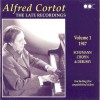
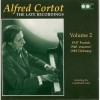
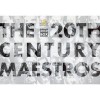
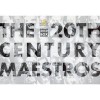
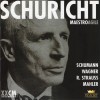
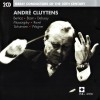
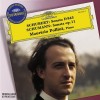
![Rostropovich - Mastercellist [CD1of2]](http://static.classicalm.com/repository/disk-cover/small/3701-img1407155132868814.jpg)
![Rostropovich - Mastercellist [CD2of2]](http://static.classicalm.com/repository/disk-cover/small/3702-img1407155736668324.jpg)
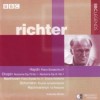
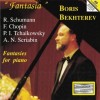
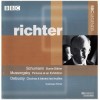
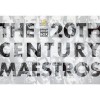
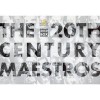
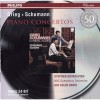
![Wilhelm Furtwaengler 1942-1944 Vol. 2 [CD 1of 5]](http://static.classicalm.com/repository/disk-cover/small/2971-img1365438559218007.jpg)
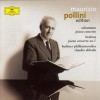
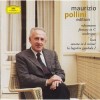
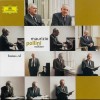
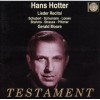
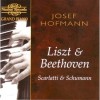
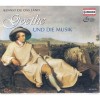
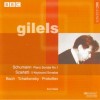
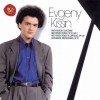
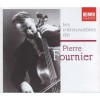
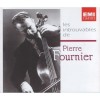
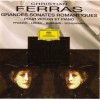
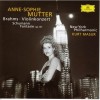
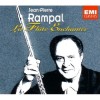
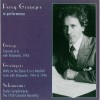
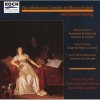

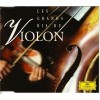
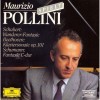
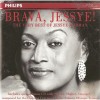

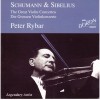
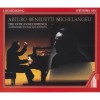
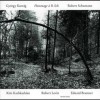

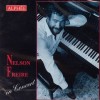
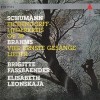
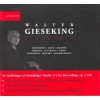
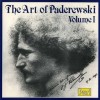
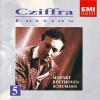
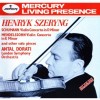

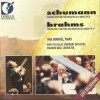
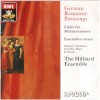
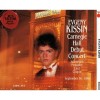
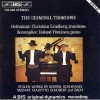
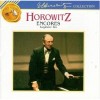
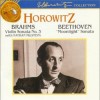

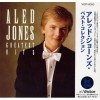

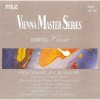
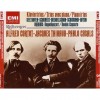
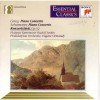

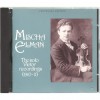
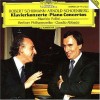
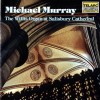

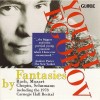
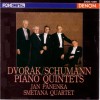
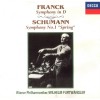
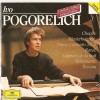
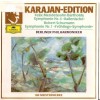
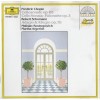
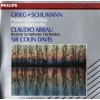
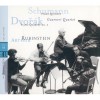
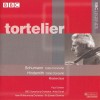
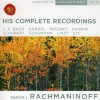
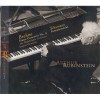
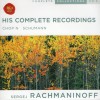
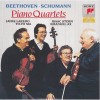
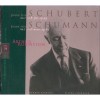
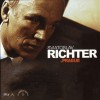
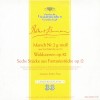
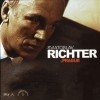

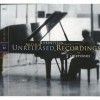
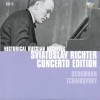
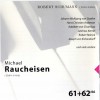
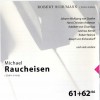
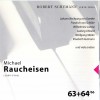
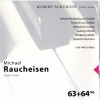

![The Complete Josef Hofmann, Volume 3 [2 CD]](http://static.classicalm.com/repository/disk-cover/small/829-img1316006934873331.jpg)
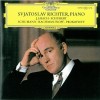
![The Complete Josef Hofmann, Volume 6 [2 CD]](http://static.classicalm.com/repository/disk-cover/small/835-img1316022353561981.jpg)
![The Complete Josef Hofmann, Volume 7 [2 CD]](http://static.classicalm.com/repository/disk-cover/small/837-img1316024984890511.jpg)
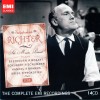
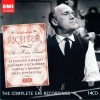
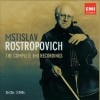
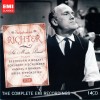
![Richter in Hungary, Volume 1 [2 CD]](http://static.classicalm.com/repository/disk-cover/small/875-img1316349914365481.jpg)
![Richter in Hungary, Volume 2 [2 CD]](http://static.classicalm.com/repository/disk-cover/small/877-img1316351918558659.jpg)
![Richter in Hungary, Volume 4 [2 CD]](http://static.classicalm.com/repository/disk-cover/small/883-img1316380039653451.jpg)
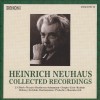
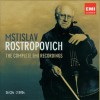
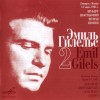
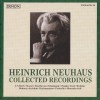
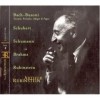

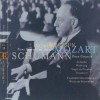
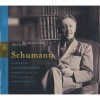
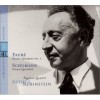
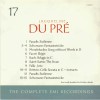
![The Heifetz Collection, Volume 19 [2 CD]](http://static.classicalm.com/repository/disk-cover/small/947-img1317413695600051.jpg)
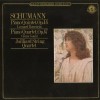

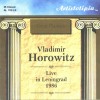
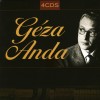
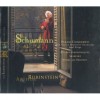
![The Heifetz Collection, Volume 1 [3 CD ]](http://static.classicalm.com/repository/disk-cover/small/715-img1315088819334029.jpg)

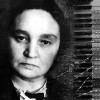
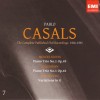
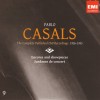
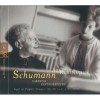
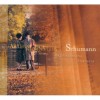
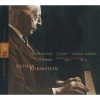
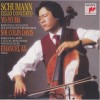
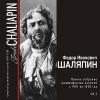
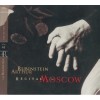
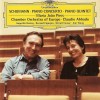
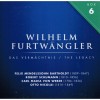
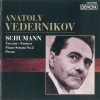
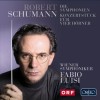
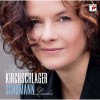

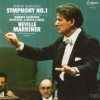

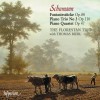
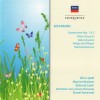
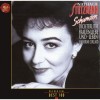
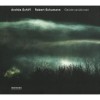
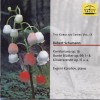
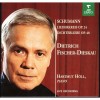
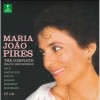

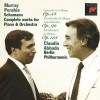
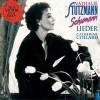
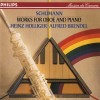
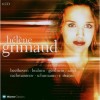
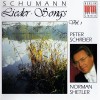

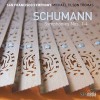
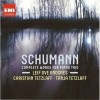
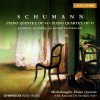
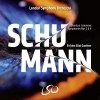
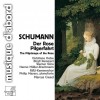

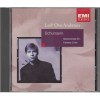




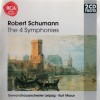
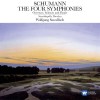
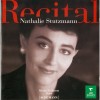
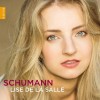
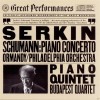
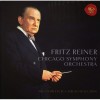
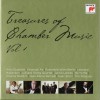
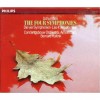
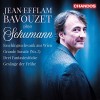

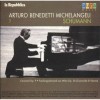
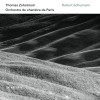

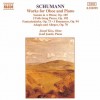
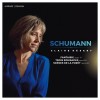
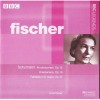
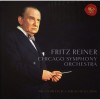
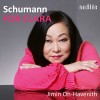
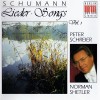
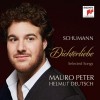
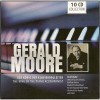
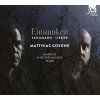
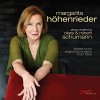
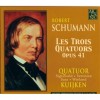
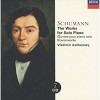
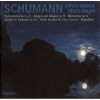
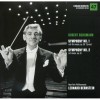
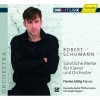
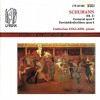
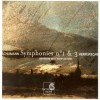
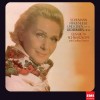
![Steven Isserlis plays Schumann [Christoph Eschenbach]](http://static.classicalm.com/repository/composition-cover/small/44848-img1678364236525234.jpg)
